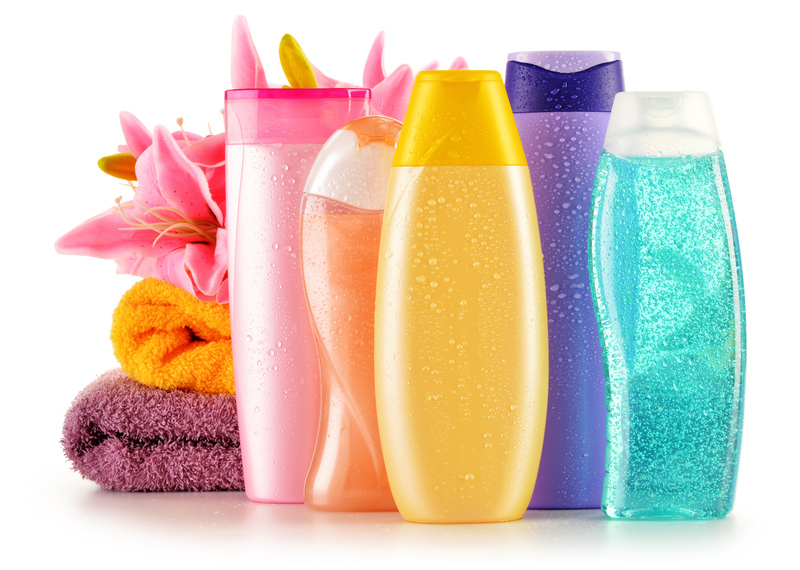Transform Your Stovetop by Removing Burned Residue
Posted on 18/05/2025
Transform Your Stovetop by Removing Burned Residue: The Ultimate Guide
Is your beloved stovetop plagued by stubborn burned-on residue? You're not alone! Cooking mishaps, overflowing pots, and everyday spills can leave even the most cared-for stovetop looking less than its best. The good news? With the right techniques, a little elbow grease, and some clever maintenance tips, you can restore your stovetop's shine and keep it looking nearly showroom-new. Let's dive deep into the foolproof methods for removing burned residue from your stovetop and transforming your entire kitchen aesthetic.

Why Burned Residue Occurs on Stovetops
Understanding the root cause of burnt residue is key to effective removal and prevention.
- Spills from boiling pots: When sauces or water overflow, they often burn onto hot surfaces.
- Food splatter: Frying or simmering dishes can lead to splatter, which, if not cleaned promptly, cooks onto the stovetop.
- Sugar and starch residue: These stick fast and burn hard, creating especially tough spots.
- High heat cooking accidents: Forgetting a pot or pan can result in severe staining and baked-on debris.
Identifying the origin of the stain helps inform the type of cleaning required. Each stovetop material--be it gas, electric, or ceramic glass--demands a specific approach for residue removal.
Essential Tools and Products for Burned Residue Removal
Before you tackle removing burned-on residue from your stovetop, gather your supplies for both effectiveness and safety. Here's a list of must-haves:
- Non-abrasive sponges or scrubbers (avoid steel wool on glass or ceramic surfaces)
- Baking soda and vinegar
- Specialty stovetop cleaner (designed for your stovetop type)
- Glass scraper or razor blade (for ceramic and glass tops only)
- Microfiber cloths
- Rubber gloves (for protection during the process)
- Spray bottle with water
- Old toothbrush (for cleaning around burners and crevices)
Always check your appliance's manual for recommended cleaning agents and any warnings about which tools to avoid.
Step-by-Step Process: How to Remove Burned Residue from Your Stovetop
1. Preparation and Safety First
- Always ensure the stovetop is completely cool before starting any cleaning process.
- Unplug electric stoves or disconnect power for added safety.
- Remove grates, burners, and any removable knobs for easier access.
2. Tackling Light Burned Residue
Mild burned residue is the easiest to remove, but it should be cleaned as soon as possible:
- Spray the area with warm water.
- Let it soak for several minutes to soften the burnt debris.
- Using a non-abrasive sponge, gently wipe away the residue in a circular motion.
- Repeat as necessary, then dry with a microfiber cloth.
3. Using Baking Soda and Vinegar for Tougher Stains
Baking soda and vinegar make a powerful, natural combo:
- Sprinkle a generous amount of baking soda on the burned spot.
- Spritz with white vinegar. It will start to fizz, helping to break down the residue.
- Let the mixture sit for 10-20 minutes.
- Use a soft scrubber or an old toothbrush to gently lift the burned stains.
- Wipe off residue with a damp microfiber cloth.
Repeat as needed for stubborn spots. This method is excellent for removing burnt residue from ceramic, glass, and stainless steel stovetops.
4. Scraping Away Burned-On Debris (For Glass & Ceramic)
- Only use a razor blade or glass scraper on smooth, glass or ceramic stovetops.
- Hold the blade at a shallow angle and gently scrape away the residue.
- Spray water as needed to prevent scratching.
- Wipe clean with a damp microfiber cloth.
Warning: Never use metal scrapers on enameled or painted surfaces or gas stovetop burners--these can scratch or damage the finish.
5. Dealing with Stubborn or Old Burned Residue
- Apply a specialized stovetop cleaner or a thick paste of baking soda and water.
- Lay a damp towel over the paste/cleaner and let it sit for up to 30 minutes to loosen the residue.
- Gently scrub with a non-abrasive pad, reapplying cleaner and letting sit if necessary.
- Rinse thoroughly and dry.
If stains persist after multiple attempts, repeat the process or consult manufacturer-recommended products for heavy-duty cleaning.
6. Cleaning Gas Burners and Grates
- Remove grates and burner caps. Soak them in hot, soapy water for at least 20 minutes.
- Scrub with a non-abrasive sponge or brush. For tough stains, use a paste of baking soda and water.
- Rinse thoroughly and let dry before replacing on the stovetop.
- Use a damp, soapy cloth to clean around burner wells. Dry completely before use.
Pro Tips for Maintaining a Spotless Stovetop
- Wipe down daily: Quickly wiping after cooking prevents buildup.
- Clean up spills immediately: Don't wait until residues harden or bake on.
- Use spill guards: Drip pans, stovetop liners, or splatter screens minimize mess.
- Regular deep cleaning: Schedule thorough cleans weekly for busy kitchens or monthly for occasional use.
- Test new cleaning products: Always perform a spot test to prevent permanent damage or discoloration.
- Avoid abrasive tools: These can scratch or weaken protective coatings.
- Consult your owner's manual: Manufacturers may list specific cleaning agents to use or avoid.
Stovetop-Specific Cleaning Advice
1. Gas Stovetops
- Grates and caps are often dishwasher safe--check the manual before washing.
- Use a toothbrush for crevices and burner heads.
- Ensure everything is dry before reassembling to prevent sparking.
2. Electric Coil Stovetops
- Unplug and remove coils before cleaning drip pans.
- Never immerse heating elements in water--wipe them carefully with a damp cloth only.
3. Glass or Ceramic Stovetops
- Strictly avoid abrasive cleansers and pads.
- Use only approved glass cooktop cleaners and scrapers.
- Buff to a shine with a microfiber cloth after cleaning for a streak-free finish.
4. Induction Stovetops
- Follow glass/ceramic stovetop guidance.
- Use induction-specific cleaners to maintain sensitive surfaces.
FAQ: Troubleshooting Burned Residue Problems
Q: Can I use vinegar alone on burned stovetop stains?
A: Yes, vinegar alone can dissolve mild stains due to its acidity. For best results, use it in combination with baking soda to lift tougher, burned-on spots.
Q: Is there a way to remove years-old burned residue?
A: Heavy-duty burnt residue may require multiple cleaning sessions, specialty cleaners, and gentle scraping. Consistency and patience are critical. Avoid harsh abrasives that may damage your stovetop surface.
Q: Will these methods work on colored enamel stovetops?
A: Yes, but always check your manufacturer's care instructions first. Avoid metal scrapers and test cleaners on a small area before doing the entire stovetop.
Q: How can I prevent future build-up of burned residue?
- Wipe up spills immediately
- Use lower heat whenever possible
- Clean regularly, even when stains are not visible
- Consider using stovetop liners for added protection

The Benefits of a Spotless, Burned-Residue-Free Stovetop
Taking the time to remove heated residue from your stovetop not only makes your kitchen sparkle--it has important practical benefits, too:
- Improved efficiency: Burned-on food can insulate burners, making them less effective and even unsafe.
- Enhanced food flavor: Old, burned debris can impart unpleasant odors and tastes.
- Extended appliance life: Regular cleaning helps protect the surface and maintain functionality.
- Safer cooking environment: Chronic buildup can become a fire hazard.
- Pride in your kitchen: A pristine stovetop inspires creativity and joy in cooking.
Conclusion: Restore and Revitalize Your Stovetop Today
Don't let burned residue dull your kitchen's heart! Whether you're hosting family, cooking for yourself, or just want an inviting space, a clean stovetop makes a world of difference. With these comprehensive and proven methods, you can transform your stovetop, remove burned residue, and keep it gleaming long into the future. Commit to regular cleanings and act swiftly on spills--you'll be amazed at the transformation. Happy cooking and enjoy your sparkling stovetop!




